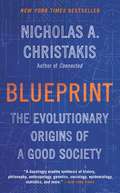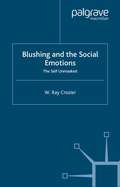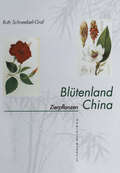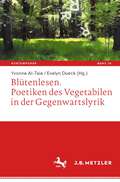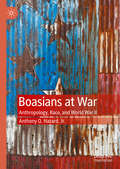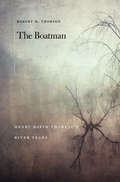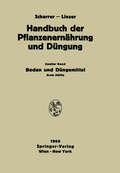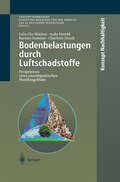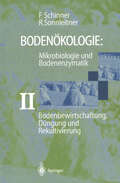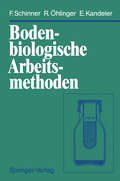- Table View
- List View
Blueprint: The Evolutionary Origins of a Good Society
by Nicholas A. Christakis"A dazzlingly erudite synthesis of history, philosophy, anthropology, genetics, sociology, economics, epidemiology, statistics, and more" (Frank Bruni, The New York Times), Blueprint shows why evolution has placed us on a humane path -- and how we are united by our common humanity.For too long, scientists have focused on the dark side of our biological heritage: our capacity for aggression, cruelty, prejudice, and self-interest. But natural selection has given us a suite of beneficial social features, including our capacity for love, friendship, cooperation, and learning. Beneath all of our inventions -- our tools, farms, machines, cities, nations -- we carry with us innate proclivities to make a good society.In Blueprint, Nicholas A. Christakis introduces the compelling idea that our genes affect not only our bodies and behaviors, but also the ways in which we make societies, ones that are surprisingly similar worldwide.With many vivid examples -- including diverse historical and contemporary cultures, communities formed in the wake of shipwrecks, commune dwellers seeking utopia, online groups thrown together by design or involving artificially intelligent bots, and even the tender and complex social arrangements of elephants and dolphins that so resemble our own -- Christakis shows that, despite a human history replete with violence, we cannot escape our social blueprint for goodness.In a world of increasing political and economic polarization, it's tempting to ignore the positive role of our evolutionary past. But by exploring the ancient roots of goodness in civilization, Blueprint shows that our genes have shaped societies for our welfare and that, in a feedback loop stretching back many thousands of years, societies are still shaping our genes today.
Blueprint: How DNA Makes Us Who We Are
by Robert Plomin'A clear and engaging explanation of one of the hottest fields in science' Steven PinkerOne of the world's top behavioural geneticists argues that we need a radical rethink about what makes us who we areThe blueprint for our individuality lies in the 1% of DNA that differs between people. Our intellectual capacity, our introversion or extraversion, our vulnerability to mental illness, even whether we are a morning person - all of these aspects of our personality are profoundly shaped by our inherited DNA differences. In Blueprint, Robert Plomin, a pioneer in the field of behavioural genetics, draws on a lifetime's worth of research to make the case that DNA is the most important factor shaping who we are. Our families, schools and the environment around us are important, but they are not as influential as our genes. This is why, he argues, teachers and parents should accept children for who they are, rather than trying to mould them in certain directions. Even the environments we choose and the signal events that impact our lives, from divorce to addiction, are influenced by our genetic predispositions. Now, thanks to the DNA revolution, it is becoming possible to predict who we will become, at birth, from our DNA alone. As Plomin shows us, these developments have sweeping implications for how we think about parenting, education, and social mobility.A game-changing book by a leader in the field, Blueprint shows how the DNA present in the single cell with which we all begin our lives can impact our behaviour as adults.
Bluetongue Viruses (Current Topics in Microbiology and Immunology #162)
by Polly Roy Barry M. GormanBluetongue viruses (BTV) cause diseases that have serious economic consequences in ruminants (sheep, cattle) in many parts of the world. The incidence of bluetongue disease affects the international movement of animals and germ plasm. Although the etiological agent of the disease was isolated in 1900 and preliminary biochemical characterizations were pub lished as early as in 1969, most of the current understanding of the molecular biology, biochemistry, and genetics of BTV has evolved only recently. Triggered by the modern techniques of molecular biology, genetics, and immunology, BTV research has experienced an information explosion in the past 10 years. However, much of this information is scattered throughout an extensive literature. It is therefore an appropriate time to meld this together into a reference book. This book includes compre hensive information on BTV research provided in articles contributed by researchers from around the world. It covers what is known about the molecular structure of the virus and the current understanding of its biology, evolution, and relationships with its invertebrate and vertebrate hosts (infection, immunity, and pathogenicity).
Bluff-Body Wakes, Dynamics and Instabilities: IUTAM Symposium, Göttingen, Germany September 7–11, 1992 (IUTAM Symposia)
by Helmut Eckelmann J. Michael R. Graham Patrick Huerre Peter A. MonkewitzBluff-body wakes play an important role in many fluid dynamics problems and engineering applications. This book gives and up-to-date account of recent results obtained in the study of bluff-body wakes. Experimental, theoretical and numerical approaches are all comprehensively covered and compared. Topics of particular interest include hydrodynamic instability analyses, three-dimensional pattern formation problems, flow control methods, bifurcation analyses, numerical simulations and turbulence modelling. The main originality of thisvolume is that recent conceptual advances made to describe nonlinear phenomena in general are put to the test on a classical problem in fundamental fluid mechanics, namely the wake structure generated behind a bluff object.
Blushing and the Social Emotions: The Self Unmasked
by W. CrozierThe blush is a ubiquitous, but little understood, phenomenon. It involves an involuntary change in the face that can express feelings, reveal character and cause intense anxiety. Crozier provides a scholarly, yet accessible, synthesis of new research, locating blushing within the context of the 'social emotions' of embarrassment, shame and shyness.
Blutdruck und Puls im Schulalter: Ergebnisse aus Längsschnittuntersuchungen an 2000 Jugendlichen von 10–16 Jahren Parameter für Ruhe und Funktion Sexualdifferenzen — Gruppenunterschiede (Wissenschaftliche Jugendkunde #11)
by G. MansfeldBlütengeheimnisse: Eine Blütenbiologie in Einzelbildern
by Georg WorgitzkyDieser Buchtitel ist Teil des Digitalisierungsprojekts Springer Book Archives mit Publikationen, die seit den Anfängen des Verlags von 1842 erschienen sind. Der Verlag stellt mit diesem Archiv Quellen für die historische wie auch die disziplingeschichtliche Forschung zur Verfügung, die jeweils im historischen Kontext betrachtet werden müssen. Dieser Titel erschien in der Zeit vor 1945 und wird daher in seiner zeittypischen politisch-ideologischen Ausrichtung vom Verlag nicht beworben.
Blütenland China Botanische Berichte und Bilder: I. Zierpflanzen: Vorkommen Symbolik Wirkstoffe
by Ruth Schneebeli-GrafBlütenlesen. Poetiken des Vegetabilen in der Gegenwartslyrik (Kontemporär. Schriften zur deutschsprachigen Gegenwartsliteratur #16)
by Yvonne Al-Taie Evelyn DueckLieß Brechts zum Diktum gewordenes Versfragment «Gespräch über Bäume» die Naturlyrik zum fragwürdigen Genre werden, so rief es gleichwohl bald Widerspruch hervor, nicht nur in Paul Celans lyrischer Replik «Ein Blatt, baumlos» und den ebenfalls auf Brecht antwortenden Gedichten Erich Frieds und Günter Eichs, sondern auch in der engagierten ökokritischen Dichtung seit den 1970er Jahren. Während das «Gespräch über Bäume» vor allem auf Natur und Landschaft als Gegenstand und Thema von Dichtung bezogen ist, fragt dieser Sammelband, wie das gegenwärtige Interesse an der Natur mit Formfragen und deren poetologischen Reflexionen in der deutschsprachigen Lyrik seit den 1990er Jahren einhergeht. Wie verbinden sich diese Formfragen und ihre poetologischen Reflexionen in der Gegenwart mit einem diachron weitgefassten Blick auf Ornamente und Schreibweisen wie Arabesken und Grotesken, Gattungsbezeichnungen wie Silven oder Florilegien, arboreale und mykologische Strukturmodelle wie Baumdiagramme, Rhizome oder Myzele, die auf vegetabile Formvorbilder zurückgreifen? Wie lassen sich diese Darstellungen des Vegetabilen in der Dichtung auf naturwissenschaftliche Verfahren der Sichtbarmachung oder das morphologische und botanische Wissen über Bau- und Formprinzipien der Pflanzen beziehen? Von diesen Beobachtungen ausgehend fragen die Beiträge dieses Bandes, welche Poetologien des Vegetabilen die deutschsprachige Gegenwartslyrik ausgebildet hat und wie sich darin botanisches Wissen, medienkritisches Bewusstsein und ästhetisches Naturerleben zu neuen dichterischen Formen verschränken.
Blutkrankheiten und Blutdiagnostik: Lehrbuch der Klinischen Hämatologie
by Otto NaegeliDieser Buchtitel ist Teil des Digitalisierungsprojekts Springer Book Archives mit Publikationen, die seit den Anfängen des Verlags von 1842 erschienen sind. Der Verlag stellt mit diesem Archiv Quellen für die historische wie auch die disziplingeschichtliche Forschung zur Verfügung, die jeweils im historischen Kontext betrachtet werden müssen. Dieser Titel erschien in der Zeit vor 1945 und wird daher in seiner zeittypischen politisch-ideologischen Ausrichtung vom Verlag nicht beworben.
BLyS Ligands and Receptors (Contemporary Immunology)
by Michael P. CancroDiscovery of the BLyS (also known as BAFF) family of ligands and receptors has yielded a paradigm shift in our view of B-lymphocyte selection, survival, activation, and homeostasis. Previously, the B-cell antigen receptor (BCR) was viewed as the sole mediator of these parameters, in which BCR signals were not only dominant but were also linearly related to consequent outcomes. However, appreciating that BLyS signaling is an equal partner in establishing and maintaining B-cell pools in- cated that additional regulatory complexity – apparently based on population density and homeostatic demands – had to be included in models of B-cell behavior. This mounting interest was ampli?ed by evidence of a clear relationship to autoim- nity. The resulting ?urry of research activity has yielded a wealth of information and insights, impacting basic concepts in B-cell tolerance and activation as well as revealing novel translational strategies for autoimmunity, neoplasia, and transplant tolerance. This book includes 12 chapters that together yield an overview of these advances and ideas. The initial excitement generated by associations with humoral autoimmunity, coupled with profound B lineage phenotypes in knockout mouse models, prompted immediate questions: What do these receptors and cytokines look like, how do they interact, what cells express them, and how does this inform our understating of their biology? Indeed, probing the structural features of BLyS family ligands and rec- tors has afforded substantial insight, as have studies directed toward understanding the basic biological actions of these molecules.
BMS Particles in Three Dimensions (Springer Theses)
by Blagoje OblakThis thesis presents the state of the art in the study of Bondi-Metzner-Sachs (BMS) symmetry and its applications in the simplified setting of three dimensions. It focuses on presenting all the background material in a pedagogical and self-contained manner to enable readers to fully appreciate the original results that have been obtained while learning a number of fundamental concepts in the field along the way. This makes it a highly rewarding read and a perfect starting point for anybody with a serious interest in the four-dimensional problem.
BMVC92: Proceedings of the British Machine Vision Conference, organised by the British Machine Vision Association 22–24 September 1992 Leeds
by David Hogg Roger BoyleThis book contains the 61 papers that were accepted for presenta tion at the 1992 British Machine Vision Conference. Together they provide a snapshot of current machine vision research throughout the UK in 24 different institutions. There are also several papers from vision groups in the rest of Europe, North America and Australia. At the start of the book is an invited paper from the first keynote speaker, Robert Haralick. The quality of papers submitted to the conference was very high and the programme committee had a hard task selecting around half for presentation at the meeting and inclusion in these proceedings. It is a positive feature of the annual BMV A conference that the entire process from the submission deadline through to the conference itself and publication of the proceedings is completed in under 5 months. My thanks to members of the programme committee for their essential contribution to the success of the conference and to Roger Boyle, Charlie Brown, Nick Efford and Sue Nemes for their excellent local organisation and administration of the conference at the University of Leeds.
Boar Reproduction: Fundamentals and New Biotechnological Trends
by Sergi Bonet, Isabel Casas, William V. Holt and Marc YesteLatent knowledge in the field of pig reproduction is vast but scattered, making it difficult to take in all information at a glance. Moreover, nascent branches in biotechnology cannot grow if deprived of roots. The book Boar Reproduction: Fundamentals and New Biotechnological Trends links the past, the present and the emerging scientific research fields on reproductive biotechnology, offering a rigorous but easy to follow compilation of topics, from “old favorites” to the latest advances. The book is organized in three parts. The chapters of the first and second part cover various biological aspects of boar spermatozoa within the male, and within the female environments, respectively. The most common laboratory and artificial insemination techniques are discussed in the third part. As an additional feature, some chapters focus on the basis of a technology transfer to bring research expertise from basic science to the market, making the information provided in this book suitable for academic, research and other professional applications.
Board Certification in Clinical Neuropsychology: A Guide to Becoming ABPP/ABCN Certified Without Sacrificing Your Sanity (AACN Workshop Series)
by Kira E. Armstrong, PhD, ABPP Dean W. Beebe, PhD, ABPP Robin C. Hilsabeck, PhD, ABPP Michael W. Kirkwood PhD, ABPPPursuit of board certification through the American Board of Professional Psychology (ABPP) has become a standard expectation for clinical neuropsychologists. At the time this book was published, the American Board of Clinical Neuropsychology (ABCN) was the fastest growing specialty board of ABPP with over 1,000 active members. However, the board certification process is challenging and can be intimidating. The objectives of this book are to demystify the process and provide practical advice for achieving board certification through ABPP/ABCN. To start, benefits of board certification are summarized and common myths debunked. Next, individual chapters for each step in the process, as well as a chapter devoted to pursuit of the pediatric subspecialty, provide details about essential elements of the task, the process, the timeline, strategies for success, common pitfalls, and what happens behind the scenes at ABPP/ABCN. Each of these chapters also has tips for trainees and supervisors who want to get a jump on preparing for board certification. Finally, encouragement and guidance for individuals who encounter setbacks at any step along the way are offered.
Board Certification in Clinical Neuropsychology: A Guide to Becoming ABPP/ABCN Certified Without Sacrificing Your Sanity (AACN Workshop Series)
by Kira E. Armstrong, PhD, ABPP Dean W. Beebe, PhD, ABPP Robin C. Hilsabeck, PhD, ABPP Michael W. Kirkwood PhD, ABPPPursuit of board certification through the American Board of Professional Psychology (ABPP) has become a standard expectation for clinical neuropsychologists. At the time this book was published, the American Board of Clinical Neuropsychology (ABCN) was the fastest growing specialty board of ABPP with over 1,000 active members. However, the board certification process is challenging and can be intimidating. The objectives of this book are to demystify the process and provide practical advice for achieving board certification through ABPP/ABCN. To start, benefits of board certification are summarized and common myths debunked. Next, individual chapters for each step in the process, as well as a chapter devoted to pursuit of the pediatric subspecialty, provide details about essential elements of the task, the process, the timeline, strategies for success, common pitfalls, and what happens behind the scenes at ABPP/ABCN. Each of these chapters also has tips for trainees and supervisors who want to get a jump on preparing for board certification. Finally, encouragement and guidance for individuals who encounter setbacks at any step along the way are offered.
Boasians at War: Anthropology, Race, and World War II
by Anthony Q. Hazard, Jr.This volume seeks to recover a specific historical moment within the tradition of anthropologists trained in the United States under Franz Boas, arguably the father of modern American anthropology. Focusing on Boasians Ashley Montagu, Margaret Mead, Melville Herskovits, and Ruth Benedict, Anthony Hazard highlights the extent to which the Boasians offer historicized explanations of racism that move beyond a quest to reshape only the discipline: Boasian war work pointed to the histories of chattel slavery and colonialism to theorize not just race, but the emergence of racism as both systemic and interpersonal. The realities of race that continue to plague the United States have direct ties to the anthropological work of the figures examined here, particularly within the context of the 20th-century black freedom struggle. Ultimately, Boasians at War offers a detailed glimpse of the long troubled history of the concept of race, along with the real-life realities of racism, that have carried on despite the harnessing of scientific knowledge to combat both.
The Boatman: Henry David Theoreau's River Years
by Robert M. ThorsonRobert Thorson gives readers a Thoreau for the Anthropocene. The boatman and backyard naturalist was keenly aware of the way humans had altered the waterways and meadows of his beloved Concord River Valley. Yet he sought out for solace and pleasure those river sites most dramatically altered by human invention and intervention—for better and worse.
The Bochner Integral (Lehrbücher und Monographien aus dem Gebiete der exakten Wissenschaften #55)
by J. MikusinskiThe theory of the Lebesgue integral is still considered as a difficult theory, no matter whether it is based the concept of measure or introduced by other methods. The primary aim of this book is to give an approach which would be as intelligible and lucid as possible. Our definition, produced in Chapter I, requires for its background only a little of the theory of absolutely convergent series so that it is understandable for students of the first undergraduate course. Nevertheless, it yields the Lebesgue integral in its full generality and, moreover, extends automatically to the Bochner integral (by replacing real coefficients of series by elements of a Banach space). It seems that our approach is simple enough as to eliminate the less useful Riemann integration theory from regular mathematics courses. Intuitively, the difference between various approaches to integration may be brought out by the following story on shoemakers. A piece of leather, like in Figure 1, is given. The task consists in measuring its area. There are three shoemakers and each of them solves the task in his own way. A B Fig. 1 The shoemaker R. divides the leather into a finite number of vertical strips and considers the strips approximately as rectangles. The sum of areas of all rectangles is taken for an approximate area of the leather (Figure 2). If he is not satisfied with the obtained exactitude, he repeats the whole procedure, by dividing the leather into thinner strips.
Boden und Düngemittel (Handbuch der Pflanzenernährung und Düngung #2 / 2)
by E. Abrahamczik J. M. Herrera H.-J. Altemüller A. Amberger N. Atanasiu J. Baeyens H. Banthien G. Barbier P. Boekel H. Bortels G. Braune M. F. Boodt L. De Leenheer E. Eriksson W. Flaig H. Franz H. Frese A. Fruhstorfer S. Gericke Gertraude Glathe H. Glathe W. Höfner K. Kaindl E. Knickmann H. Koepf J. J. Lehr H. Linser H. Löcker E. Mückenhausen H. Müller D. J. Nicholas T. Niedermaier P. K. Peerlkamp V. Rank K. Rauhe E. Rauterberg G. Riehle J. Chr. Salfeld H. K. Schäfer K. C. Scheel U. Schwertmann H. Söchtig S. Trocmé B. Wohlrab F.-H. ZiemerBodenbelastungen durch Luftschadstoffe: Perspektiven eines umweltpolitischen Handlungsfeldes (Konzept Nachhaltigkeit)
by Felix C. Matthes Anke Herold Karsten Sommer Charlotte StreckDie Versauerung von Böden ist eines der zentralen Themen einer an Nachhaltigkeit orientierten Umwelt- und Wirtschaftspolitik. Wirksame Umweltentlastungen können hier nur durch Maßnahmen in so unterschiedlichen Bereichen wie Energiewirtschaft, Verkehr und Landwirtschaft erzielt werden. Das Buch bietet neben einer detaillierten Analyse von Emissionsverlauf und -struktur der wichtigsten Schadstoffe zunächst einen umfangreichen Überblick zu den notwendigen Emissionsminderungen. Anschließend werden die bisher in Deutschland sowie auf internationaler Ebene ergriffenen politischen Instrumente zur Emissionsminderung versauernd wirkender Substanzen im Detail analysiert, wobei Effekte bei der Emissionsminderung gleichberechtigt neben ökonomischen, sozialen und rechtlichen Aspekten stehen.
